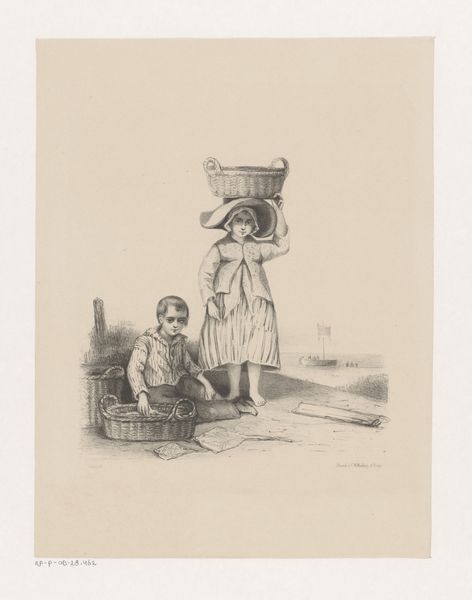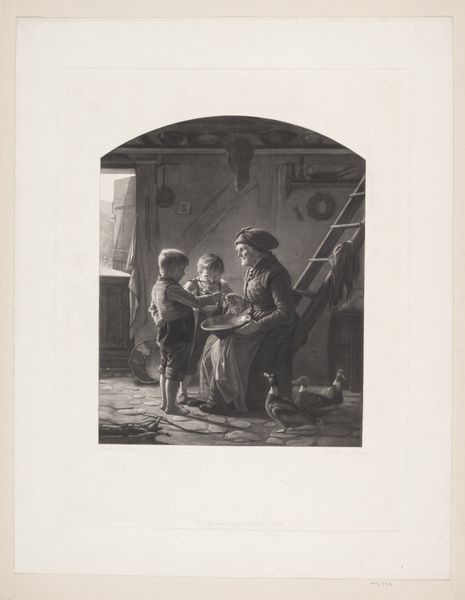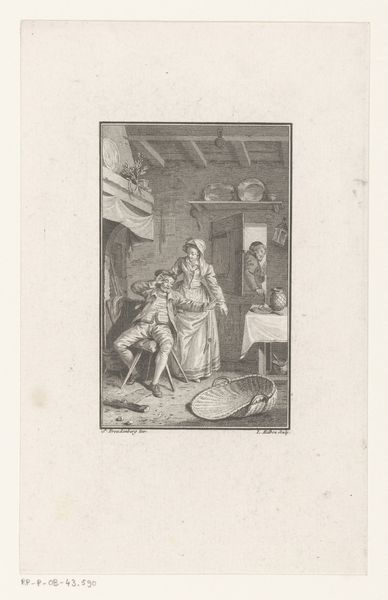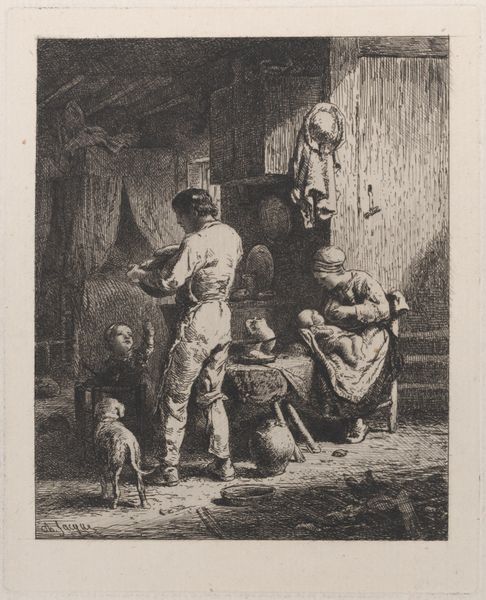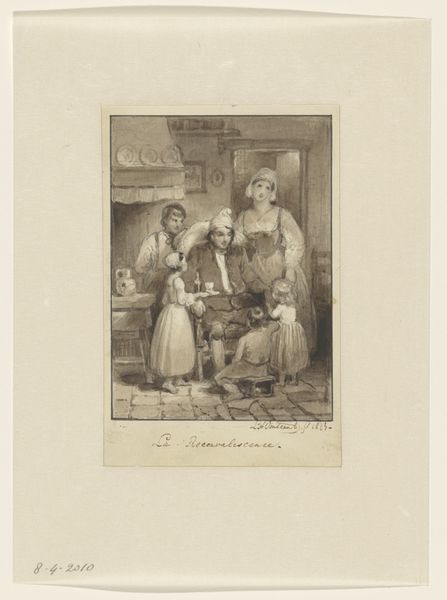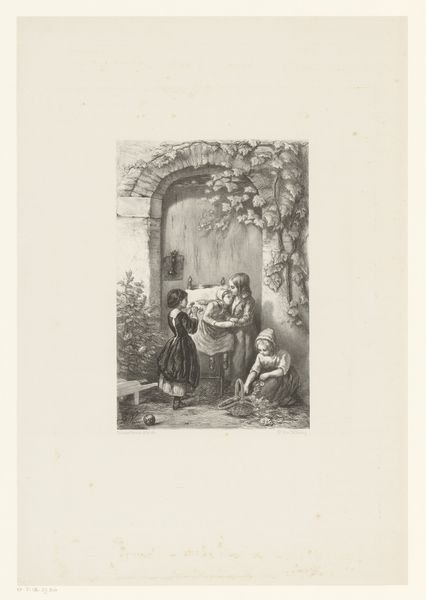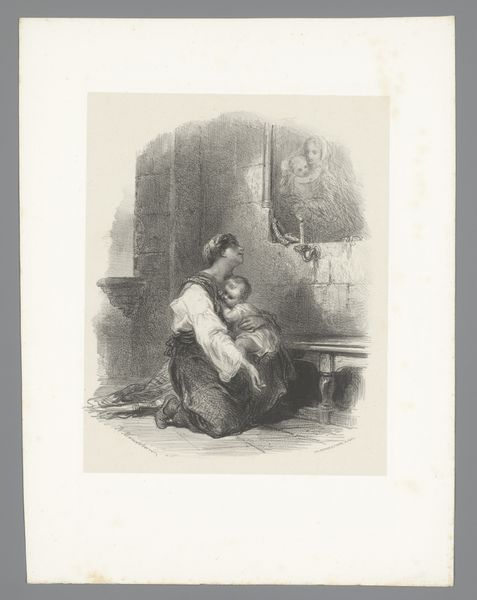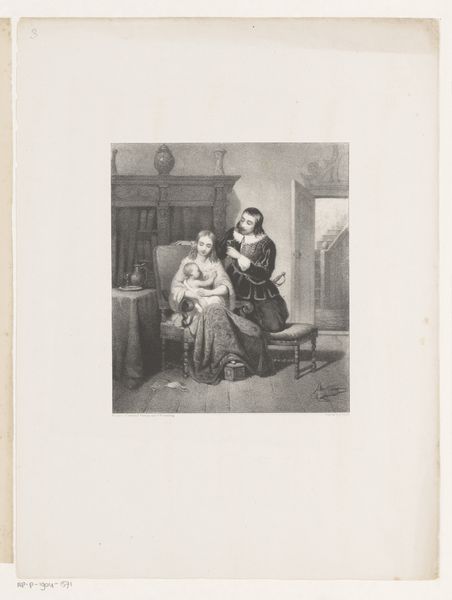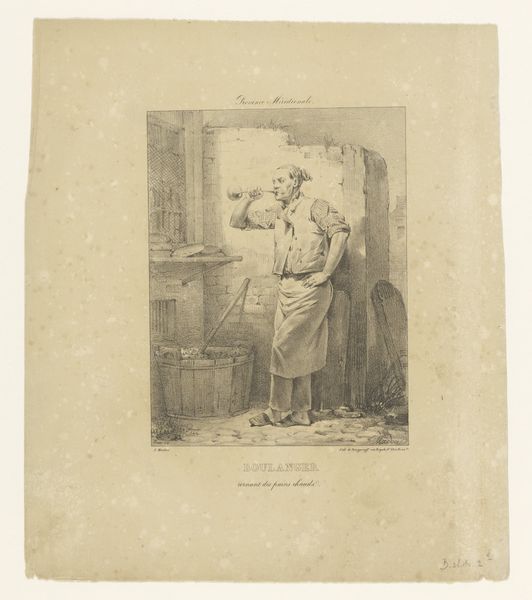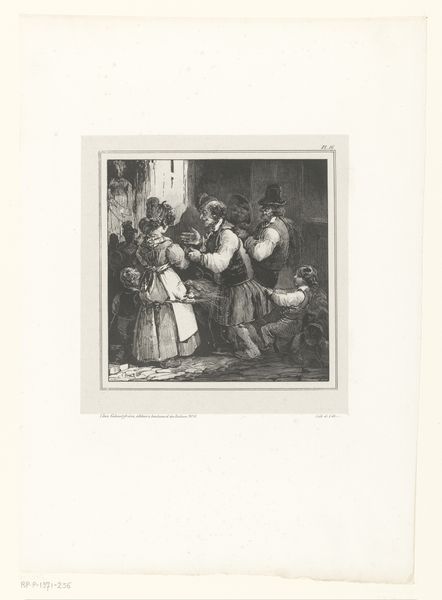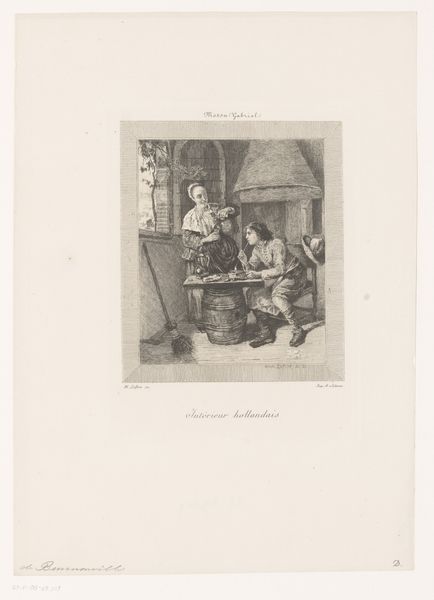
drawing, print, etching, ink
#
portrait
#
drawing
# print
#
etching
#
ink
#
genre-painting
Dimensions: 233 mm (height) x 177 mm (width) (Plademål)
Editor: This is G.V. Blom's "Bellmansk situation," created in 1900. It’s a print, an etching really, in ink, depicting what looks like a genre scene. It's a simple domestic interior with a musician and what seems to be his patron. The details are quite intricate. What can you tell me about it? Curator: This work gives us a glimpse into the intersection of artistic patronage and the social life of the turn of the century. Etchings like this were often produced for a growing middle class, eager to consume images that reflected their own aspirations and cultural values. It's interesting how the 'genre painting' theme connects with this. How do you think this scene reflects the artist's position within the societal context of that time? Editor: I see your point. It’s almost like he’s documenting a real moment, not just creating an idealized version of life. Do you think that's what gave it appeal to the middle class? Curator: Precisely. It suggests a realism, a connection to everyday life, even though, being an etching, it would have been relatively affordable. Think about the choice of subject: a musician, implying a certain level of culture, but in a somewhat humble setting. Editor: So, the location --the fact that it's a home, rather than a concert hall -- places it more in reach of those emerging social classes? I hadn’t thought about it that way. It also gives context to the 'portrait' style in a less traditional location. Curator: Yes. How does the composition of the work contribute to that sense of intimacy or access for these contemporary viewers? Editor: Now that you mention it, the figures aren't posed in an obviously artificial way. There’s something spontaneous about it. I learned something new today, by not just appreciating the artwork itself, but what it can mean as part of something bigger! Curator: Indeed. Looking at art as a cultural artifact enriches our understanding of history and society. I learned how crucial it is to analyse social and artistic relations to better approach art.
Comments
No comments
Be the first to comment and join the conversation on the ultimate creative platform.

